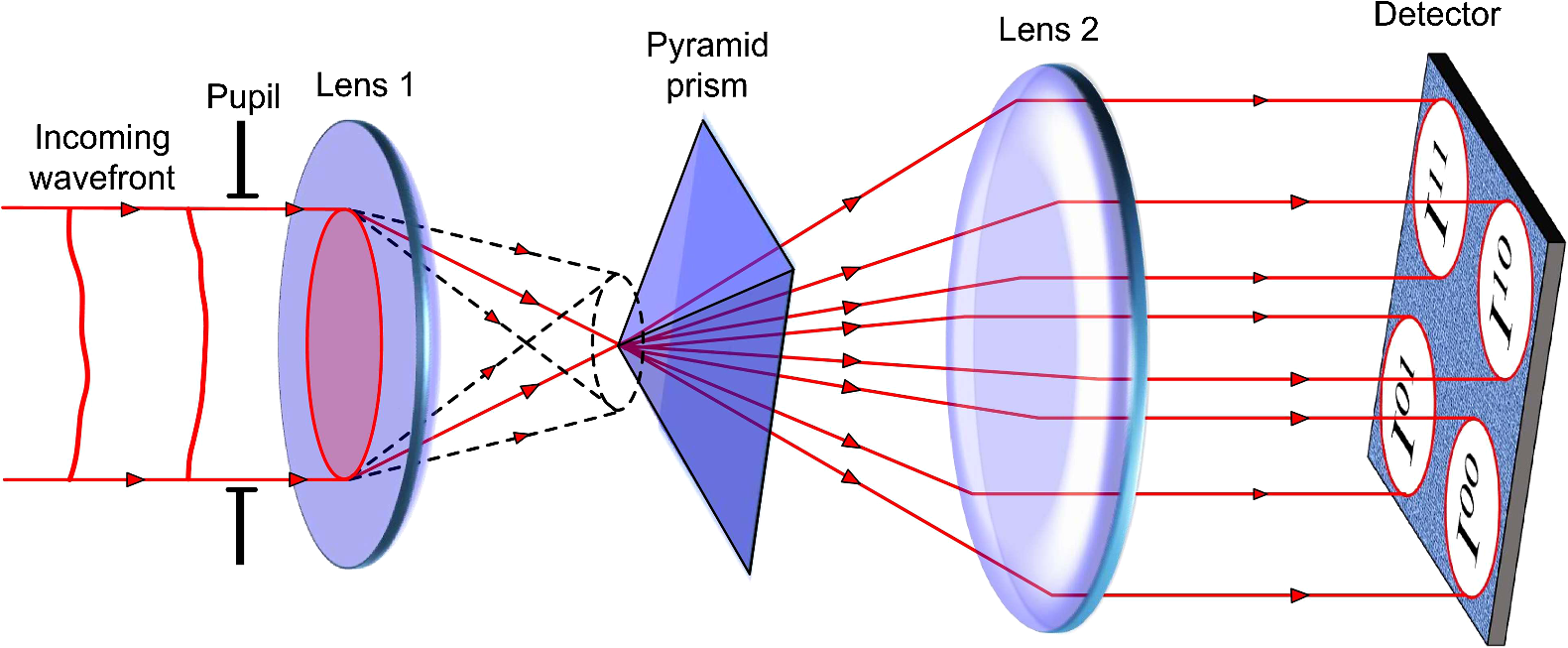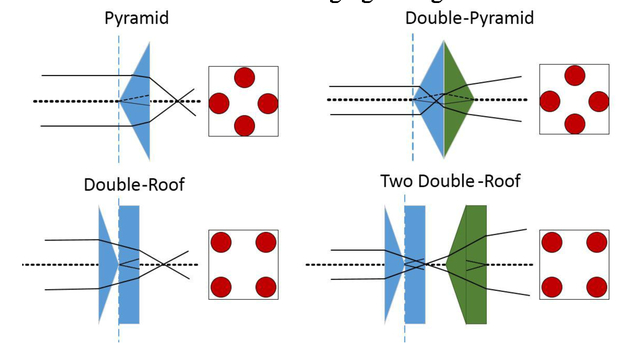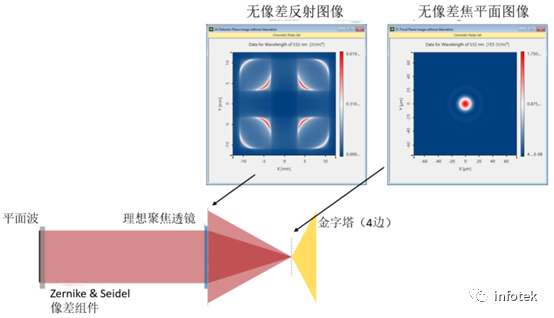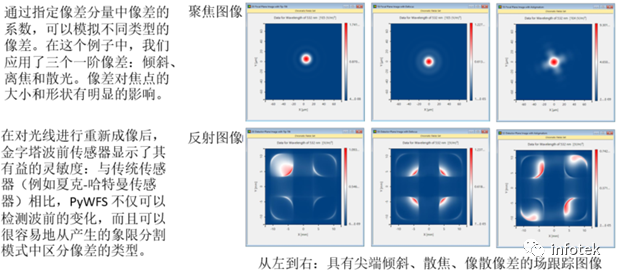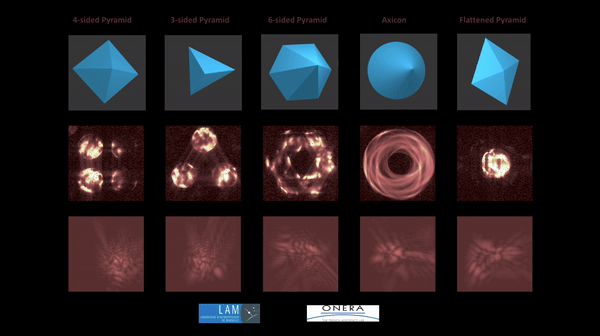#Y2024 #光学测量
A pyramid wavefront sensor is a type of a wavefront sensor. It measures the optical aberrations of an optical wavefront. This wavefront sensor uses a pyramidal prism with a large apex angle to split the beam into multiple parts at the geometric focus of a lens. A four-faceted prism, with its tip centered at the peak of the point spread function, will generate four identical pupil images in the absence of optical aberrations. In the presence of optical aberrations, the intensity distribution among the pupils will change. The local wavefront gradients can be obtained by recording the distribution of intensity in the pupil images. The wavefront aberrations can be evaluated from the estimated wavefront gradients. It has potential applications in astronomy and ophthalmology.
与传统的夏克-哈特曼传感器相比,使用金字塔形棱镜或反射器的波前传感器(PyWFS,用于金字塔波前传感器)具有高对比度和更好的波前灵敏度,例如用于天文学中太阳系外行星的搜索。因此,这种类型的波前传感器用于特殊的望远镜(例如[[凯克天文台]]),通常在红外(IR)光谱范围内。PyWFS通常由四边棱镜、重成像光学元件和适当的探测器组成。
有透射,反射多种
